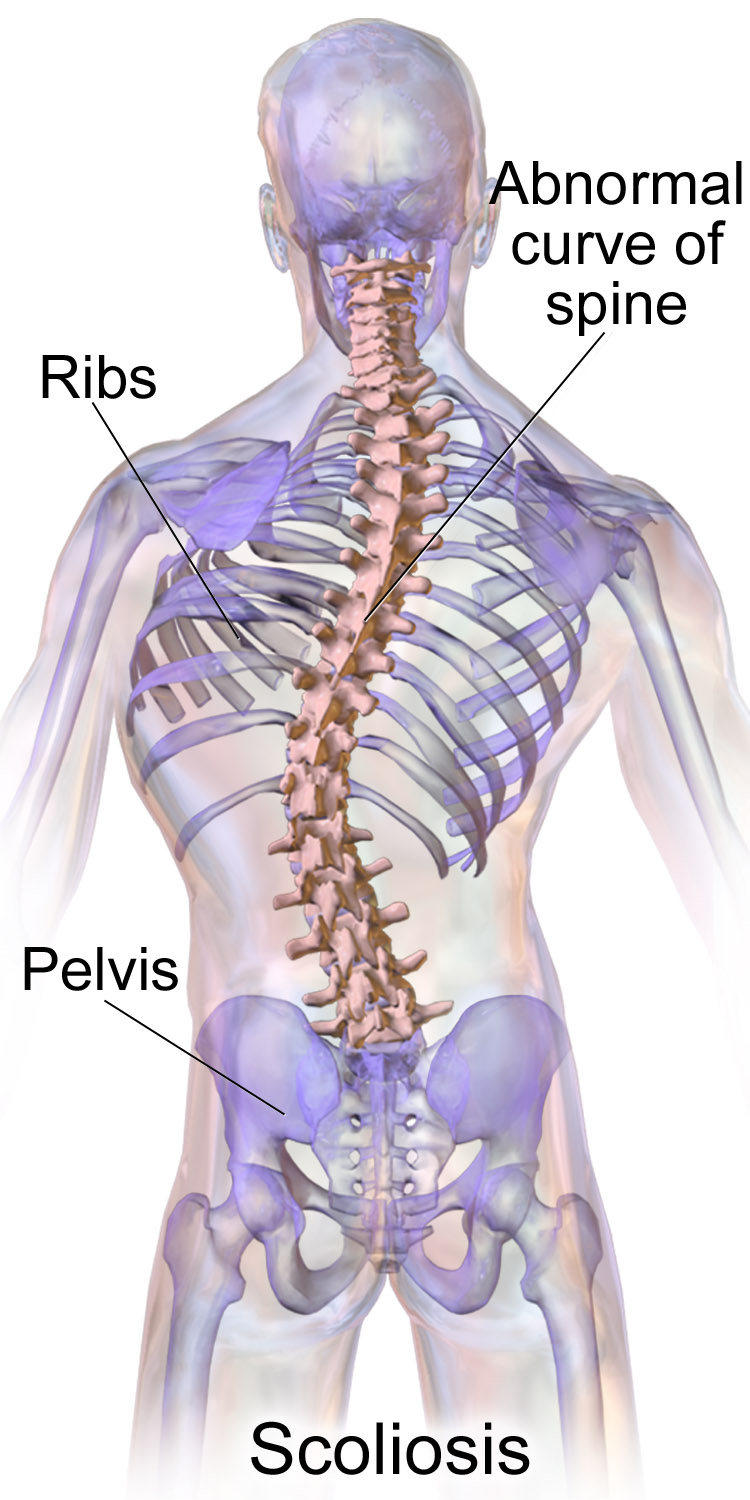- Like
- SHARE
- Digg
- Del
- Tumblr
- VKontakte
- Flattr
- Buffer
- Love This
- Save
- Odnoklassniki
- Meneame
- Blogger
- Amazon
- Yahoo Mail
- Gmail
- AOL
- Newsvine
- HackerNews
- Evernote
- MySpace
- Mail.ru
- Viadeo
- Line
- Comments
- Yummly
- SMS
- Viber
- Telegram
- JOIN
- Skype
- Facebook Messenger
- Kakao
- LiveJournal
- Yammer
- Edgar
- Fintel
- Mix
- Instapaper
- Copy Link

Between six and nine million people (2-3 percent of the population) in the United States are currently affected by scoliosis.
If you’re part of this group, you may have been told that you shouldn’t be exercising. Or, maybe you’ve been cleared to exercise but are unsure of where to begin. No matter which boat you’re in, this article can help.
Read on to learn everything you need to know about training safely when you have scoliosis.
What is Scoliosis?
Scoliosis is a condition that occurs when the vertebrae of the spine shift and cause the spine to develop an S- or C-shaped curve. Scoliosis is either congenital (present at birth), idiopathic (without any known cause) or a secondary condition to an illness like cerebral palsy.
In addition to the S- or C-shaped curve (which can vary from a barely noticeable deviation to a dramatic curve that impedes heart and lung function), some other symptoms of scoliosis include:
Back pain, especially in the mid or upper back and shoulders
Muscle spasms
Leaning to one side, even when you feel that you’re standing up straight
Changes in gait
Poor range of motion in the spine
Is it Safe to Exercise with Scoliosis?
This is usually the first question people with scoliosis have about exercise. Is it safe, or will it make their condition worse?
In short, it is safe to exercise with mild-to-moderate scoliosis, and certain exercises can actually relieve pain and help reverse the condition by re-aligning the spine.
That being said, not all types of exercise are safe for people with scoliosis, and it’s important to get clearance from a doctor or physical therapist before beginning a new training regimen.
Best Exercises for People with Scoliosis
The following are some of the safest and most effective exercises to help people with scoliosis correct imbalances and improve general strength and fitness.
Bird-dogs
Hip bridges
Cable anti-rotation exercises
Unilateral (single-arm or single-leg) exercises like single-arm dumbbell rows, single-leg deadlifts, or kneeling lat pull-downs
Exercises to Avoid
While exercise is, generally speaking, good for people with mild-to-moderate cases of scoliosis, there are some exercises that can put unnecessary pressure on the back and increase pain.
Heavy Weight Lifting
Resistance training can be very beneficial for correcting imbalances that make scoliosis worse and contribute to pain. But, it’s best to stick with unilateral movements instead of heavy weight-lifting exercises like barbell squats or deadlifts, at least when you’re first starting out.
Over time, with the help of a qualified personal trainer, you may be able to incorporate these exercises into your routine, but they’re not ideal for a beginner with back problems.
Yoga Backbends
Yoga has been shown to be helpful in treating scoliosis, especially core-strengthening exercises like side planks. But, there are some yoga poses that should be avoided.
Deep backbends (such as wheel pose) are not ideal for people with scoliosis, nor are other back-bending postures like cobra. A good rule of thumb is to avoid anything that forces your spine into a U-shape.
Certain Sports
It’s also not a good idea for people with scoliosis to participate in certain sports, especially at times when they’re dealing with a lot of back pain. Some sports that can be problematic include:
Impact sports with a greater risk of falling or colliding with another player (football, soccer, hockey, rugby, etc.)
Dance and gymnastics (these require a lot of bending and flexing, which can put too much stress on the spine)
One-sided sports that can exaggerate imbalances and worsen the unevenness of the spine (golf, tennis, racquetball, etc.)
Additional Safety Tips
When it comes to training with scoliosis, there are a few other precautions you can take to maintain your health and safety while still reaping the benefits of regular exercise:
Get evaluated by a physical therapist first to ensure it’s safe for you to exercise
Focus on stretching tight muscles and strengthening weaker ones
Avoid forceful or aggressive motions
Work with a personal trainer to learn the basics and practice proper form
Focus on core stabilizing exercises
Go slowly when increasing weight or repetitions
Use kettlebells to improve strength and motor control and correct muscle imbalances

